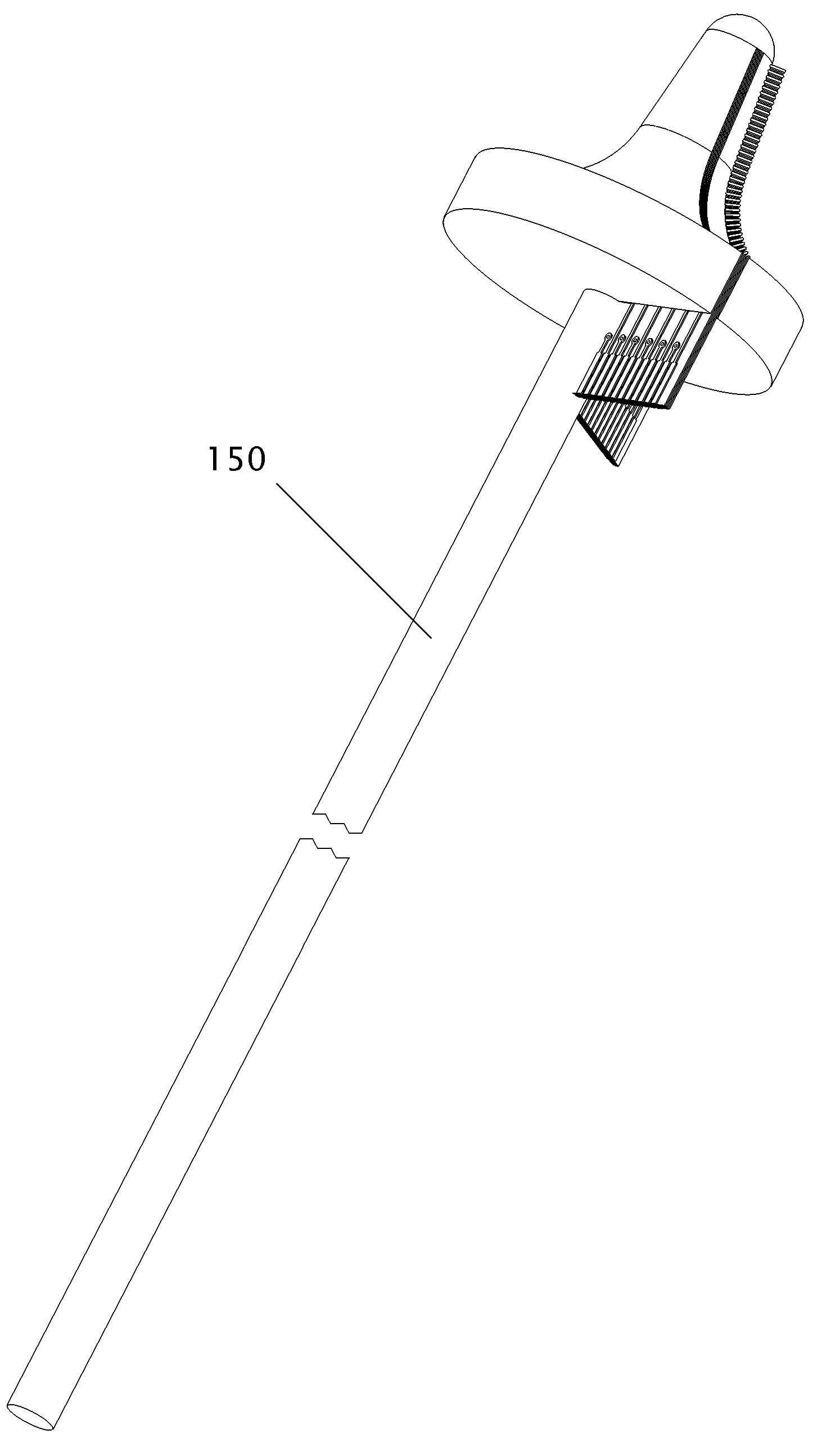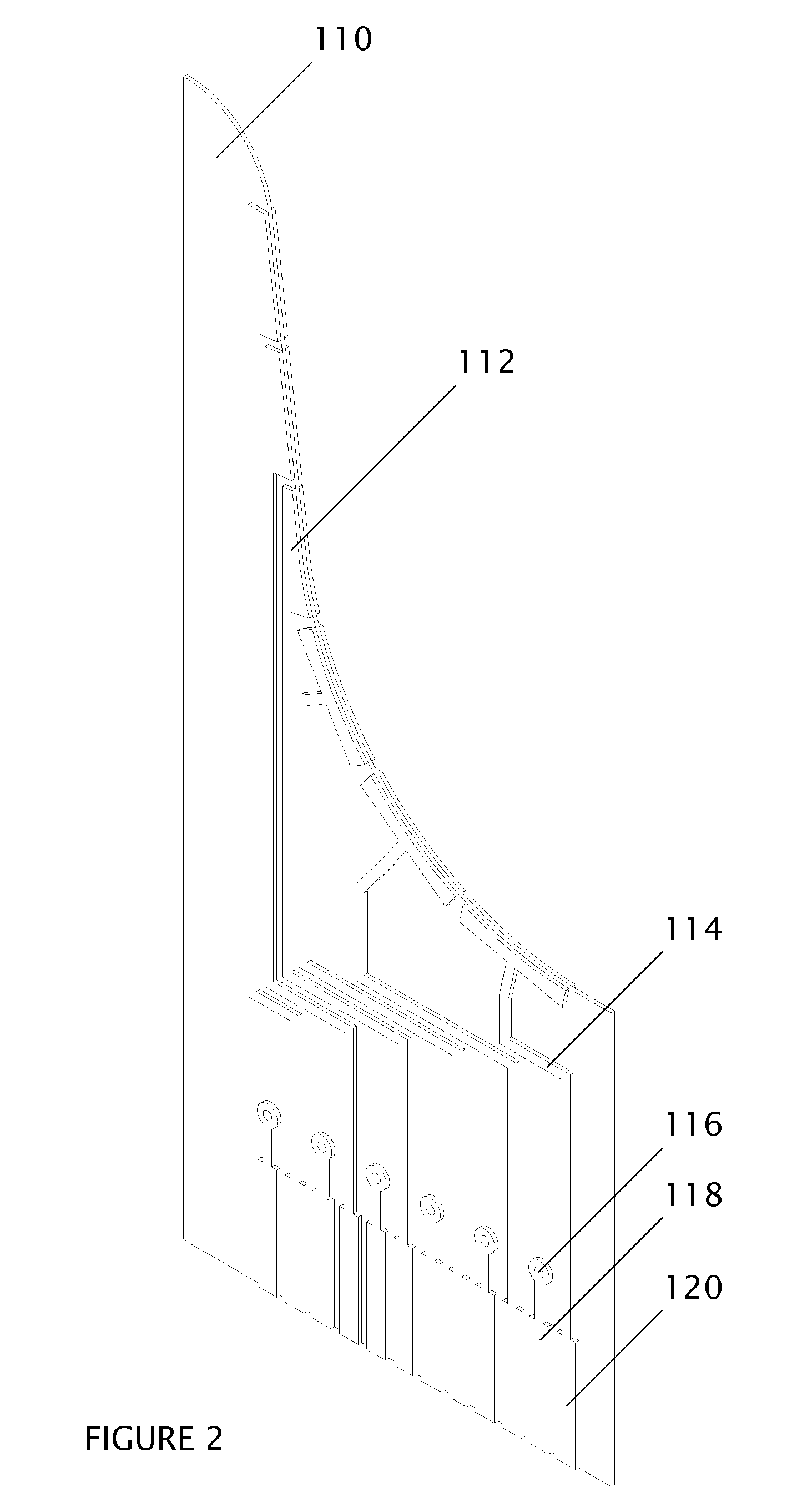Device for Tissue Diagnosis and Spatial Tissue Mapping
a tissue diagnosis and tissue technology, applied in the field of tissue diagnosis and spatial tissue mapping, can solve the problems of inexact positioning of tissue removal instruments, inability to accurately detect cancer near the surface, and low measurement performance of previous attempts to use electrical measurements for tissue diagnosis
- Summary
- Abstract
- Description
- Claims
- Application Information
AI Technical Summary
Problems solved by technology
Method used
Image
Examples
embodiment
Preferred Embodiment
[0060]The system consists of (a) a probe tip which contains an array of electrodes and contacts the tissue directly; (b) a handpiece which is mechanically and electrically connected to the probe tip and which consists of a connecting drive shaft assembly, motors or other kinetic devices to position the probe tip precisely, and an electrical connection to the electrodes in the tip; (c) an electrical signal generation device to stimulate the tissue by means of electrical waveforms; (d) a data acquisition device to measure the electrical signal response from the tissue; (e) a processor which controls the signal generation device, data acquisition device, signal response storage and analysis, and the motors or other kinetic devices used to move the probe tip. The signal generation device and data acquisition device may be contained as electronic components and circuits within the handpiece or externally to the handpiece, as in a circuit board located within a compute...
PUM
 Login to View More
Login to View More Abstract
Description
Claims
Application Information
 Login to View More
Login to View More - R&D
- Intellectual Property
- Life Sciences
- Materials
- Tech Scout
- Unparalleled Data Quality
- Higher Quality Content
- 60% Fewer Hallucinations
Browse by: Latest US Patents, China's latest patents, Technical Efficacy Thesaurus, Application Domain, Technology Topic, Popular Technical Reports.
© 2025 PatSnap. All rights reserved.Legal|Privacy policy|Modern Slavery Act Transparency Statement|Sitemap|About US| Contact US: help@patsnap.com



